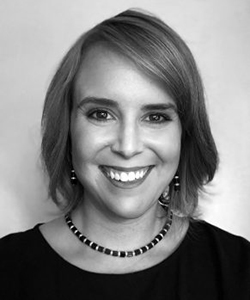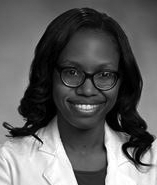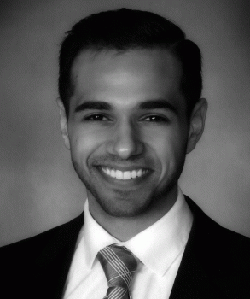The 2021 NRMP Main Match is open. But now what? There are thousands of programs with spots available in this upcoming match cycle, but that doesn’t mean you need to apply to all of them. We spoke with Breanne Jaqua, DO, MPH, Eleanora Yeiser, DO, and Ronak Mistry, DO, about what advice they have for students taking their next big step on their Road to DO Licensure – finding the residency program that feels right for them. Find out what worked for them, what didn’t, and what they wish they did differently.
The 2021 NRMP Main Match is open. But now what? There are thousands of programs with spots available in this upcoming match cycle, but that doesn’t mean you need to apply to all of them. We spoke with Breanne Jaqua, DO, MPH, Eleanora Yeiser, DO, and Ronak Mistry, DO, about what advice they have for students taking their next big step on their Road to DO Licensure – finding the residency program that feels right for them. Find out what worked for them, what didn’t, and what they wish they did differently.

Breanne Jaqua, DO, MPH
Dr. Jaqua recently completed a residency in Emergency Medicine at the Mercy St. Vincent Medical Center in Toledo, OH and is now an Assistant Professor at the A.T. Still University School of Osteopathic Medicine in Arizona. She currently serves as the 2019-2021 Resident Representative to the ACGME’s Emergency Medicine Review Committee and the 2020-2021 Vice Chair to the ACGME’s Council of Review Committee Residents. She is also on the Board of the Emergency Medicine Residents Association (EMRA).

Eleanora Yeiser, DO
Dr. Yeiser is currently a PGY-3 family medicine resident at Main Line Health in Bryn Mawr, PA. She currently serves as a NBOME Resident Ambassador, and works to advocate for DO students and their credentials. Her professional involvements include reviewing articles for the Osteopathic Family Physician Journal. She is a member of the Pennsylvania Osteopathic Medical Association Committee on Professional Guidance (East Region) and serves on her resident wellness and diversity committees. After residency, she will be relocating to northern New Jersey to practice outpatient family medicine.

Ronak Mistry, DO
Dr. Mistry is currently Chief Resident at Pennsylvania Hospital of the University of Pennsylvania Health System/Penn Medicine in Philadelphia, PA. He started there as an internal medicine resident in 2017, and is currently applying for fellowships in hematology-oncology for the 2021 Match cycle.
Researching Programs
Making the decision about what residency programs to apply to is probably one of the biggest decisions you make in your career. How did you approach researching programs?
EY: I started with the non-negotiables, which, for me, was location. With residency comes a new set of stressors and demands. For the sake of my well-being, it was essential to be as close as possible to my spouse, my family and my friends. Consider settings that will allow you to gain experience with a patient population that will help you meet future goals; decide what’s best for you in the long-term, but also consider the short-term.
BJ: If I were researching programs today, I would definitely use EMRA Match to learn about emergency medicine programs. This tool is amazing and serves as an alternative to residency program listings or ranking websites and allows applicants to easily filter information. For EM applicants, EMRA Match is a treasure-trove of information. I got engaged during my residency application cycle and it would have been extremely difficult for my fiancé to relocate, so I put significant emphasis on the geographic location of the program. Participating in a “second look” visit at a few of my top choice programs after the formal interview day was also very helpful. This 3-4 hour shadow experience let me observe the flow of the emergency department and experience real-time interactions among residents, faculty, nurses, and staff outside of the formal interview setting.
RM: The first decision to make is what kind of setting you see yourself training in: a large academic institution, an academic-affiliated community institution or a community hospital. Each different setting provides different opportunities, so it’s important to determine where you see yourself. The second decision is going to be location. Although I didn’t think this was as important at first, as I went through my interviews I realized that location was more important than I had initially thought. Was I okay with being somewhere rural? Was I okay with being hours away from my family and friends? Was I okay with the options to enjoy life outside of the hospital, including outdoor activities, locations for shopping and restaurants? Once I answered these questions, I used websites like FREIDA, though the American Medical Association, to help narrow my choices.
What were the most important factors to you when you were considering different programs?
EY: Size, curriculum, and fit were important considerations for me. I wanted to train at a medium sized program. I also wanted to be in a program large enough that there was enough diversity and resources, but not so large that I became lost in the crowd. At the same time, I wanted to be in a program small enough that I could get enough individual attention, personalization and mentorship in my training. It’s important to consider the type of environment you will thrive in. I wanted to train at a place that felt like a good fit for me, which is not always something you can research — it’s more about intuition.
RM: The location and the type of program were very important to me up-front. Next, I looked at the types of rotations residents did and resident outcomes — not every program is the same. Some programs put an emphasis on getting residents into fellowships, while others are geared at molding future primary care doctors. It’s important to pick a program with a track record consistent with what you see yourself doing in the future, but also with enough flexibility and guidance in the institution to help you if you change your mind. When I was at the interviews, I was most interested in culture — what was the interaction like amongst the residents, attending physicians, and fellows? This is so important because you will spend countless hours at the hospital and it’s important that you work in an environment that is supportive and collegial, where you are not afraid to ask questions and have the opportunity to grow as a physician.
I will say, it is important to acknowledge that this year is somewhat unique since interviews are virtual. Being about halfway through my own interview season, do not let this dismay you. A lot of the information that we all want to know about is objective – schedules, vacations, educational opportunities. These are the same things that we would have read about on program websites, in emails, when talking to residents in the program and in program presentations. But culture is hard to gauge virtually. The best way to assess this is attend any and all opportunities you get to interact with current house staff and askthem about culture. I think a good metric to use is to see if you are getting consistent answers about what makes that place special to train in.
Applying and Interviewing
When you created your rank order list, how did you know that the programs would be right for you?
EY: I started by knowing which programs were not the right fit—you have to trust your instincts. No program is perfect, and you can’t truly learn everything or anticipate everything that may arise; the only way to get a true sense of it is once you are actually immersed. The same way you are putting your best foot forward, programs are doing the same. I would avoid putting too much emphasis on any one program feature. This year has shown us that things can change suddenly. Additionally, your interests, desires and needs can change as well. Programs change too — they grow and evolve just as you do throughout this process. Keeping that in mind, I recommend ranking programs based on where you think you would be genuinely the happiest.
RM: At the end of the day, I realized that many of my programs were similar and that I was lucky that I saw myself being happy being at any of the places I interviewed. The culture of the program and the feeling I got when I spoke to the residents was what ultimately helped me decide the order. I am happy to say that I was totally right about that “gut instinct”, having just completed residency at my top choice program this past June, and now being a Chief Resident and Hospitalist at this program!
We know residency programs come in all shapes and sizes and in towns big and small. As you looked for the program that was right for you, what major differences did you notice between rural and urban programs? And do you think this has an impact on training in certain specialties (fewer cases, etc.)?
RM: The biggest difference in rural vs. urban programs is the diversity of patients and access to different medical interventions. I found that in rural programs, oftentimes their patients tended to be more homogenous and the medical problems could, therefore, be limited. Furthermore, access to the latest innovations in healthcare may be limited. In an urban setting, particularly in a large city, I found more diversity in patient populations and medical conditions. That being said, many rural programs, especially very large academic hospitals, have huge catchment areas, so do not be fooled by what shows up.
What advice do you have for current applicants who are interviewing? What should they keep an eye out for?
EY: Be yourself. Every place where you interview will not be the best fit for you, but you can use each interview experience to help with the next. Don’t be afraid to ask questions — you can even ask a few of the same questions at different interviews to help compare programs and build your list. Talk to the residents and staff to get a sense of the program and its culture. Ask about the program’s response to the COVID-19 pandemic in different settings. How did they adapt to current and evolving circumstances? Did the residents feel safe and adequately supported?
How do you recommend applicants position their osteopathic education as a distinguishing characteristic to residency programs?
BJ: Approximately one quarter of medical students in the country are osteopathic medical students, and the interview is a great time to describe what your osteopathic medical education means to you. You can highlight school-specific initiatives you started or participated in, or emphasize unique aspects of the educational program at your school. One of many ways to emphasize your osteopathic credentials is to highlight in your personal statement or interview how your osteopathic education has shaped your journey in medicine. You may want to seek out programs that are accredited by the ACGME with Osteopathic Recognition, which signifies to prospective applicants that the program is dedicated to continuing osteopathic education in residency and/or fellowship training.



